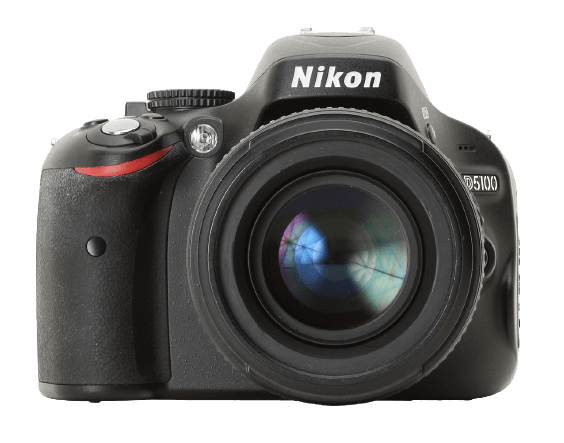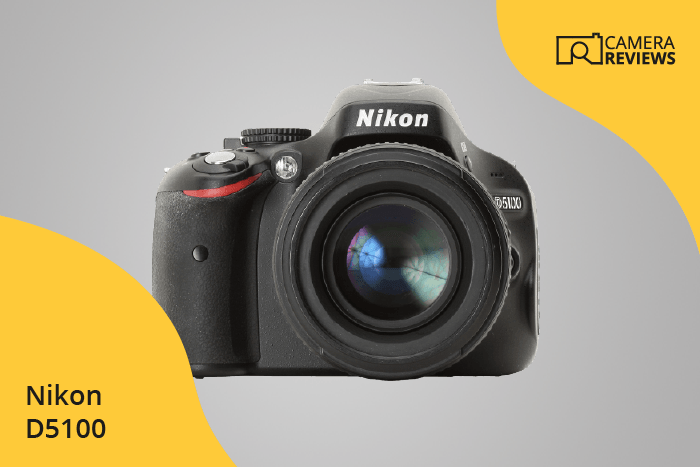Nikon D5100 Specs and Scores

The Nikon D5100, with a score of 49 out of 100, offers a variety of specifications that are worth considering. Announced on April 5, 2011, and released later that year, this DSLR initially had a launch price of $799. The camera’s dimensions are 128 x 97 x 79mm, and it weighs 560g or 1.23lbs.
Considering its age, the D5100 may not be the top choice for photographers in today’s market. However, it still holds some value for those who appreciate its specifications and compact size.
Nikon D5100 Overview and Optics
The Nikon D5100 receives a score of 52/100 for its optics. This camera features a 16.2-megapixel CMOS sensor, an Expeed 2 processor, and a shooting speed of 4 frames per second. The DXOMARK score for the sensor is 80, which is decent but not outstanding in today’s market. The sensor size is APS-C, and the lens mount is Nikon F DX.
Unfortunately, the D5100 lacks image stabilization, which is a drawback for those who need steady shots. The aspect ratio of 3:2 is standard for most DSLR cameras. When compared to newer models, the D5100’s optics may not be as impressive, but it still offers reliable performance for casual photographers.
The Nikon D5100 provides satisfactory optics for its age, but it may not meet the needs of more advanced users in the current market.
Nikon D5100 Video Performance
The Nikon D5100 scores well enough in the video category. This camera offers a maximum video resolution of Full HD, with dimensions of 1920 x 1080 pixels. The maximum video frame rate is 30 frames per second, ensuring decent video quality for casual users.
In today’s market, the D5100’s video capabilities are average, as many modern cameras offer 4K resolution and higher frame rates. However, the D5100 includes a time-lapse functionality built-in, which is a useful feature for capturing dynamic scenes over time.
Nikon D5100 Features and Benefits
The Nikon D5100’s features score stands at 41/100. The camera possesses a 3-inch screen with a resolution of 921,000 dots but lacks a touchscreen. It does, however, have a flip screen for easier viewing at various angles. Unfortunately, the D5100 does not come with GPS, WiFi, or Bluetooth capabilities.
Comparing these specifications to today’s market, the Nikon D5100 falls short in terms of technological advancements. Many modern cameras now include touchscreens and connectivity options such as WiFi and Bluetooth for seamless photo sharing and remote control. The absence of these features makes the D5100 less competitive and appealing to photographers who value convenience and up-to-date technology.
Despite its shortcomings, the Nikon D5100 remains a reliable camera for those who prioritize essential functions and do not require advanced features. Its flip screen and solid resolution contribute to a satisfactory user experience, but the lack of connectivity options and a touchscreen may deter some potential buyers.
Nikon D5100 Storage and Battery
The storage and battery section of the Nikon D5100 receives a score of 51/100. This camera has one memory card slot, which accepts SD, SDHC, and SDXC cards. The battery life allows for 2200 shots, utilizing an EN-EL14 battery. However, the camera does not support USB charging.
In today’s market, the Nikon D5100’s storage and battery specifications are somewhat average. The single memory card slot and lack of USB charging are limitations compared to newer models. Despite this, the 2200-shot battery life remains a strong point, as it ensures extended shooting sessions without the need for frequent battery replacements.
Nikon D5100 Alternatives
Do you want to know how the Nikon D5100 compares to its competitors? Have a look at the most popular comparisons for this camera below:
- Nikon D3500 vs D5100
- Nikon D5100 vs D5600
- Nikon D3200 vs D5100
- Nikon D5100 vs D5300
- Nikon D5100 vs Sony a7 II
- Nikon D5100 vs D5500
Nikon D5100 FAQ
Does the Nikon D5100 Have Built-in Image Stabilization?
The Nikon D5100 does not have built-in image stabilization. However, you can use Nikon lenses with Vibration Reduction (VR) technology to achieve stabilized images.
Does the Nikon D5100 Support 4K Video Recording?
The Nikon D5100 does not support 4K video recording. It is capable of recording Full HD (1080p) videos at 30 frames per second.
What Size Sensor Does The Nikon D5100 Have?
The Nikon D5100 features an APS-C sized sensor, specifically a 16.2-megapixel DX-format CMOS sensor, providing high-quality images and performance.
Does the Nikon D5100 Have a Dual Memory Card Slot?
The Nikon D5100 does not have a dual memory card slot. It comes with a single SD/SDHC/SDXC memory card slot for storage.
Does the Nikon D5100 Have a Touch Screen?
The Nikon D5100 does not have a touch screen. It features a 3.0-inch 921K-dot vari-angle LCD monitor for live view shooting and image playback.
Does the Nikon D5100 Have Wi-Fi and Bluetooth?
The Nikon D5100 does not have built-in Wi-Fi or Bluetooth capabilities. However, you can use an optional wireless mobile adapter for remote shooting and image transfer.
Does the Nikon D5100 Have GPS?
The Nikon D5100 does not have built-in GPS functionality. You can use an optional GPS unit to geotag your images.
Is the Nikon D5100 Weather Sealed?
The Nikon D5100 is not weather sealed. It is recommended to use a protective cover or case when shooting in challenging weather conditions.
Does the Nikon D5100 Have a Built-in Flash?
Yes, the Nikon D5100 has a built-in pop-up flash, which is useful for providing additional light in low-light situations or as a fill flash.

